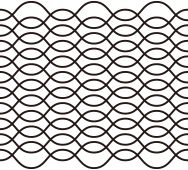

THEORY OF 3 LAYERS
VONATURE® has an original mattress theory of 3 layers: the support layer, transition layer and comfort layer.
1. Comfort Layer: The section of the mattress that comes into direct contact with the body, designed to provide a delicate and comfortable feel against the skin, along with excellent breathability to ensure a premium sleep experience.
2. Transition Layer: It conforms seamlessly to the natural curves of the spine and muscles, ensuring an even distribution of pressure, effectively relieving pressure points, and enhancing sleep comfort.
3. Support Layer: Primarily focuses on providing stable support for the body's skeletal structure and spine, ensuring they are maintained in their natural position to prevent unnecessary deformation, thereby protecting spinal health.


Common Materials Used in Comfort Layers
The comfort layer of a mattress is a core component that determines the overall sleep experience, primarily serving to cushion pressure, protect the spine, and enhance comfort. In terms of material selection, it typically incorporates foam, natural latex, animal hair wadding (such as horsehair or wool), breathable fabrics, and high-quality cotton. Through scientific blending, these materials achieve a balance between comfort and softness, catering to the diverse sleep preferences of different individuals.

Common Materials Used in Transition Layers
The mattress's Transition Layer effectively disperses pressure and ensures balanced body support. It typically incorporates materials such as VONATURE AIR™ (POE), palm fiber, animal hair wadding (e.g., horsehair or wool), natural latex, and high-resilience cotton foam. Through scientific blending, it balances pressure dispersion and support point distribution to meet the demands of comfortable sleep.

Common Materials Used in Support Layers
Its primary function is to provide stable support for the skeletal structure and spine, maintaining their natural physiological curvature. The materials typically selected include high-support, deformation-resistant materials such as VONATURE AIR™ (POE), Trachycarpus Fortunei, sisal fiber, and springs, all aimed at protecting spinal health.
-

Trachycarpus Fortunei
Learn MoreMattresses made from Trachycarpus fortunei exhibit good resilience and supportive qualities, effectively protecting the health of the human spine.
-

VONATURE AIR™
Learn MoreVONATURE AIR™, also known as Polyolefin Elastomer (POE), colorless or milky white waxy particles, non-toxic, odorless. Melting point: 85 to 110°C.
-

Coconut Fiber
Learn MoreCoir, also known as coconut fiber, is made from the coconut husk, which is present between the outer and inner walls of the coconut.
-

Sisal Fiber
Learn MoreSisal fibers are obtained from the eponymous plant of the genus Agave. Among all natural plant fibers, sisal fibers have the highest elongation value.
-

Corn Fiber
Learn MoreCorn fiber is a synthetic fiber produced using corn, wheat, and other starch-based materials as raw materials, through processes such as polymerization and spinning.
-

Natural Latex
Learn MoreNatural latex, an environmentally friendly adhesive, is the liquid that comes out of the cuts of rubber trees that have been growing for 6-8 years.
-

Cotton
Learn MoreCotton fiber is a natural fiber, with cellulose as its major constituent. It is also a porous material that allows for effective air permeability, keeping the skin comfortable.
-

Other
Learn MoreAs different products are used in diverse scenarios, we carefully select materials to offer users a wider range of raw material options.
Leave your contact information









